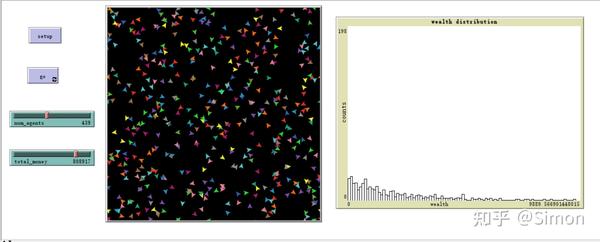

Now if we want to use this number to calculate an easy probability, say a coinflip. There are a total of 10^16 different options for X.Let's start with considering a random number X, that is generated by random-float 1. But even if that minuscule number matters your approach is correct. While you can indeed never reach 1, a random-float outcome has 16 decimals so the difference is negligible. What you have written is the correct way to go about it. Then I plug these into my code: ask patches [Ĭould some kind soul verify these, in particular because the last value will never actually hit one, am I underestimating it? Thanks! 推荐答案 In my model I have 7 agents that I want to produce according to the following probabilities: 0.493 0.368 0.060 0.067 0.006 0.004 0.002 I'm getting a bit confused about the random-float function because it produces a value strictly less than the one you provide. While of turtles = 0.493 and choose-size = 0.861 and choose-size = 0.921 and choose-size = 0.988 and choose-size = 0.994 and choose-size = 0.998 The cookie is set by the GDPR Cookie Consent plugin and is used to store whether or not user has consented to the use of cookies. The cookie is used to store the user consent for the cookies in the category "Performance". This cookie is set by GDPR Cookie Consent plugin. The cookie is used to store the user consent for the cookies in the category "Other. The cookies is used to store the user consent for the cookies in the category "Necessary". The cookie is set by GDPR cookie consent to record the user consent for the cookies in the category "Functional". The cookie is used to store the user consent for the cookies in the category "Analytics". These cookies ensure basic functionalities and security features of the website, anonymously. Necessary cookies are absolutely essential for the website to function properly.


 0 kommentar(er)
0 kommentar(er)
